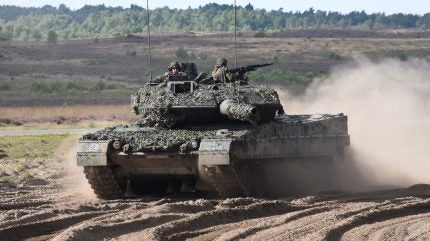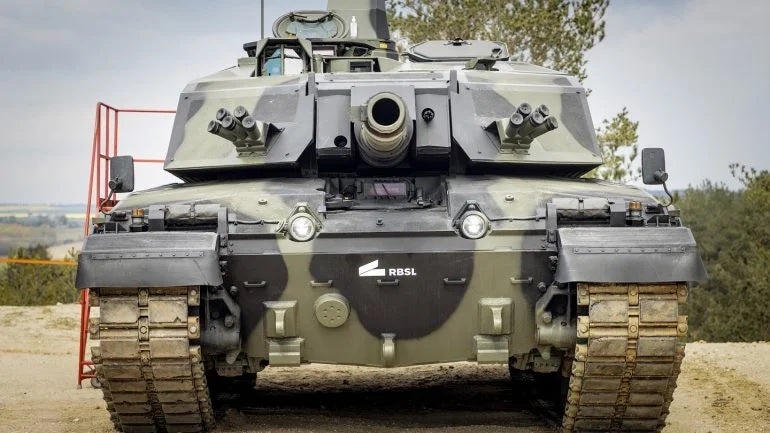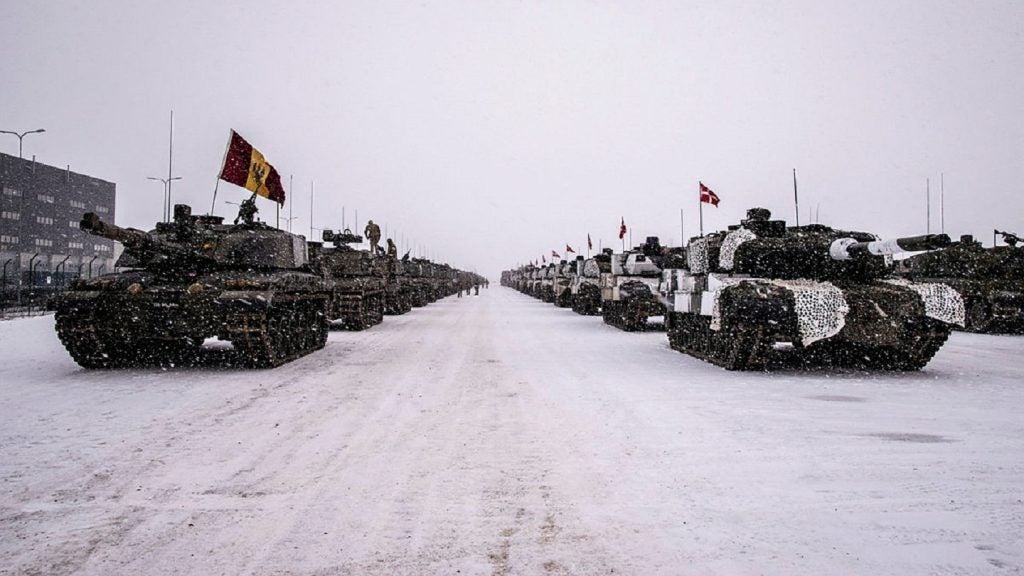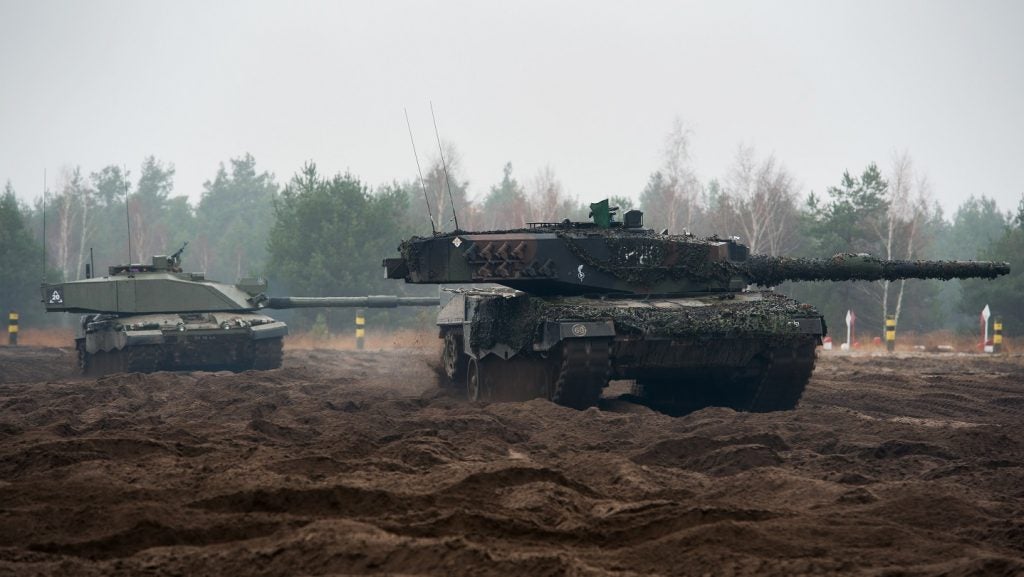
The signing of a new joint declaration between the UK and Germany to further bilateral defence cooperation, adds additional depth to a relationship that already sees industrial collaboration between the two countries in a range of programmes, particularly in the land domain.
Announced on 24 July 2024, the signing of an Enhanced Defence Cooperation agreement is intended to further increase levels and defence and industrial ties, as European countries radically reassess military priorities in light of Russia’s large-scale invasion of Ukraine in 2022.
Listed as “priority objectives” in the agreement was the need for “strengthening defence industries” and “enhancing interoperability”, indicating a central element could be in seeking to bring greater commonality in platforms used by both countries, the UK stated at the time.
Already, Germany industry is working with the UK in the production of the Boxer mechanised infantry vehicle for the British Army, as well as the joint development and production of the new RCH 155 self-propelled artillery system.
However, could the real jewel in land sector cooperation be the license manufacture or straight acquisition of the Leopard 2A7 main battle tank (MBT), the latest in-service variant of a type widely operated across Europe?
British Army: Challenger 3
As the British Army sought to address a number of obsolescence issues and modernise its vehicle fleets, attention turned to the venerable, but ageing, Challenger 2 MBT, in service since 1998 and in need of either an upgrade or outright replacement.
Most problematic of all was the uniqueness of the Challenger 2 main gun, a rifled L30A1 that no other force in Nato operated. The solution was the find a way to bring into service the Rheinmetall’s L55A1 120mm smoothbore gun that has become ubiquitous throughout the Alliance.
Options were discussed, with the decision taken to upgrade a portion of the small fleet of Challenger 2 tanks to the Challenger 3 variant.
The same gun is used by the Leopard 2 series, from the AX variant onwards.

The sticking point could be the near $1bn contract to upgrade 148 Challenger 2 tanks to the Challenger 3 standard was awarded to Rheinmetall BAE Systems Land (RBSL), a joint venture between German prime Rheimetall and the UK’s BAE Systems.
With the first of a total of eight prototypes already undergoing trials, the programme is planned to keep the Challenger 3 platform in service until at least 2040. Initial operating capability is expected in 2027, while full operating capability is scheduled to be reached in 2030, although UK military timelines typically slip to the right.
It may be determined that with the integration of the L55A1 main gun into Challenger 3, the tenet of ‘interoperability’ has been met, with the Challenger 3s able to share from a common ammunition pool with Germany and other European operators of later model Leopard 2 MBTs.
Europe’s de-facto heavy armour
Developed by German prime KNDS, which is responsible for the RCH 155 platform and also has a share in the Boxer programme through KMW (now KNDS Deutschland), the Leopard 2 was first produced in 1979 and is in service with the armies of Austria, Canada, Chile, Denmark, Finland, Germany, Greece, the Netherlands, Norway, Poland, Portugal, Singapore, Spain, Switzerland, Sweden and Türkiye, with more than 3,500 tanks produced.
The latest iterations are the Leopard 2A7+, and the Leopard 2A8, with the A7+ variant a natural evolution over the older versions, incorporating features such as an active protection system (which is being fitted to the British Army’s future Challenger 3), the option of the L55A1 main gun (as with the Challenger 3), improved day/night optics for the crew, and crew compartment cooling systems in turret and chassis for use in hot environments.

Speaking at the RUSI Land Warfare Conference on 23 July, Chief of the Defence Staff Adm Tony Radakin reportedly stated that the British Army was in poor condition, contending against underinvestment and a range of other troubling issues.
The number of available Challenger 2 tank is understood to be below the around 200 inventory strength as the fleet continues to age. With just 148 Challenger 3 variants, the number of available upgraded MBTs will further reduce for the British Army.
A 2023 order by Germany for 18 Leopard 2A7 MBTs to replenish stocks amounted to around €525m ($566m), or around €29m per tank. Also, in February 2023, the Norwegian government announced its intention to procure 54 Leopard 2A7s – with the option to purchase 18 more units – for over $1.8bn, which equates to around €30m per vehicle.
Clearly, the acquisition of new-build Leopard 2A7s would be the more expensive option for the UK, compared to the upgrade of the Challenger 2, but it offers complete commonality with European militaries.
Deciding factors: tank vs tank
Having not produced a clean sheet tank design since the 1990s with the Challenger 2, a generation of defence engineers in the UK have not needed to design a new armoured vehicle, content as the British Army was with its Challenger 2 platform.
However, while the Challenger 2 has seen very little in the way of upgrade through its service life, Europe’s Leopard 2 has benefited from the new buzz phrase commonly heard in UK military circles, that of ‘spiral development’, where a platform is gradually updated over its lifetime.
At some point, the UK’s land industrial complex will undoubtedly throw in its lot with a European or US next-generation tank programme, such as the follow on from the Abrams X concept or Europe’s Main Ground Combat System.

Perhaps one of the deciding factors will be whether or not the UK will seek to increase the number of MBTs in its inventory, with the finite, and extremely limited, number of Challenger 2 limiting how many more vehicles can be upgraded to Challenger 3.
Even for a small increase to around 200 Challenger 3s, from the 148 at present, is likely not possible due to the approximate 200 vehicles left in the inventory, including those deemed non-operational.
The outcome of the Strategic Defence Review initiated by the new UK Labour government, due to be released in the first half of 2025, will likely provide clarity on a plethora of procurement programmes, with every expectation that some will be altered, or potentially axed, in favour of greater European interoperability and commonality.




